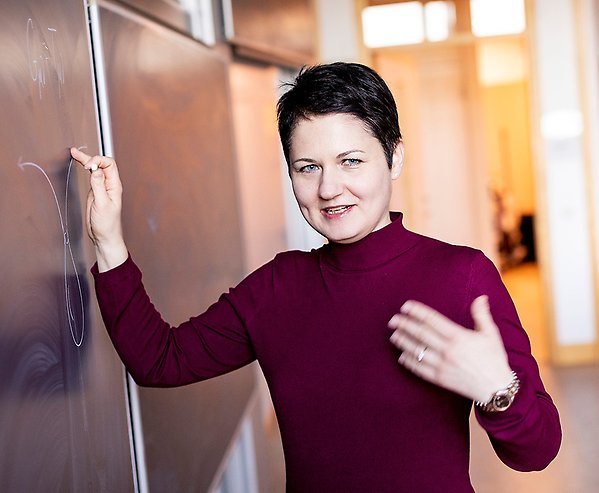Anna Sakovich tells about her research in mathematical relativity theory

Anna Sakovich. Photo: Mikael Wallerstedt.
Anna Sakovich was born in 1982 in Minsk, Belarus. She came to Sweden in 2007 to study a PhD programme. In 2013, she defended her doctoral thesis, titled “Asymptotically hyperbolic manifolds in mathematical relativity”. Her area of research is geometrical analysis focusing on mathematical problems that arise in the study of Einstein’s general theory of relativity.
“It is a very interesting and exciting area, thanks to its connection to the structure of the universe. Our knowledge of black holes, the Big Bang and the recently discovered gravitational waves are consequences of Einstein's equations. All this can be described and studied mathematically, using geometry and differential equations”, says Anna Sakovich.
Among other things, Anna Sakovich works with constructing and studying initial data for the so-called initial value problem in the mathematical theory of relativity.
The initial value problem was discovered by the French mathematician Yvonne Choquet-Bruhat. The discovery revolutionized research in the theory of relativity and enabled the field of mathematical theory of relativity. There is a lot to yet be explored in the field.
“We are posing questions such as how to estimate the size of a black hole or to calculate the center of mass and momentum of a galaxy. Another interesting question is to find out how well different models describe our universe.”
Besides doing research, Anna Sakovich also teaches, which she enjoys.
“It is fun to teach at Uppsala University because we have students in pure mathematics. There are also plenty of seminars and the education is always closely linked to research, which means that we work with current issues.”
Mathematical relativity theory
In 1916, Albert Einstein published his first works on the general theory of relativity. There, he explains gravity as a curvature of “spacetime”, the geometric merging of space and time, using its equations.
In 1952, Yvonne Choquet-Bruhat reformulated Einstein's equations as an initial value problem, where spacetime is considered as the time development of a given initial state (the “average” of spacetime), and she proved local existence and uniqueness of the solutions.
The mathematical theory of relativity is based on Choquet-Bruhat's work and focuses partly on problems concerning initial data for Einstein's equations, and partly on evolutionary problems describing the time development of initial data.
